Early Career Scientist Spotlight
Dr. Svetlana Shkolyar
Astrobiologist
Planetary Geology, Geophysics and Geochemistry Laboratory
Did you always know that you wanted to be an astrobiologist?
Yes and no. I have been fascinated with UFOs and aliens since I was in fourth grade. As a child, I was interested in reading books about these topics, especially my favorite series, Goosebumps. I did not know that there was a career path called astrobiology back then. I didn’t know you could make a living literally looking for alien life in the universe until I was getting a master’s degree. I assumed I would study astronomy or cosmology and pursue that as a research career. I always knew I wanted to end up at NASA, so I definitely followed my dreams to get here.
What is your research focus?
My work tries to inform strategies for looking for ancient signs of life preserved in rocks on Mars using rover instruments. I use field and laboratory methods to find the right types of rocks that may preserve ancient life and study them with a variety of laboratory instruments that can tell us if there is biologically produced carbon inside. One of the instruments I specialize in is Raman spectroscopy, a laser-based technique that can provide a very sensitive fingerprint of a chemical compound at a very high resolution.
The first Raman instruments (not one but two of them) are now active on the surface of another planet for the first time in history: on Perseverance Rover on Mars. Perseverance will use its instruments to select and store (or cache) a suite of samples for eventual return to Earth as part of the Mars Sample Return (MSR) campaign. My current focus is to help the Perseverance mission scientists figure out the best samples to be returned for biosignature analyses on Earth, as well as for most accurately determining a more precise age of the landing site on Mars. It is very exciting to be part of the Perseverance mission team.
I’m also involved with a NASA project through the Center for Life Detection to help create a thorough database of biosignatures and how to measure them, aimed at helping mission developers plan future astrobiology missions. This project leverages input from the astrobiology community; I am enjoying the community building process and guiding many experts in the field on this project.
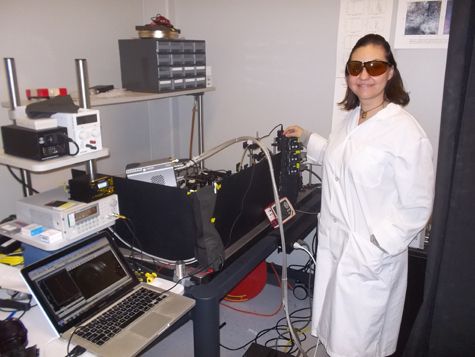
Credit: Evan Eshelman
What is one space mission that you are particularly excited about, and why?
Perseverance rover!
My PhD studies focused on strategies to inform the Perseverance rover biosignature selection strategies. Now, Perseverance is currently sampling many interesting locations and preparing to cache a small suite of samples for return to Earth.
My entire dissertation focused on the sampling aspects - selecting the right types of rock samples containing potential evidence of ancient life and informing laser spectroscopy instruments like those onboard Perseverance to identify those samples. Now, I am excited to be a part of that mission and to be able to help the team do exactly this. It is rewarding to see how my PhD preparation has trained me to participate in the mission and how it serves me now.
It will be interesting to see how sample selection and caching will unfold over the next few years of the mission, and which samples we will return to Earth for high resolution biogenicity (life detection) and age dating analyses. I am looking forward to seeing the samples returned to Earth (likely in the next decade) and I may even participate in their analyses!
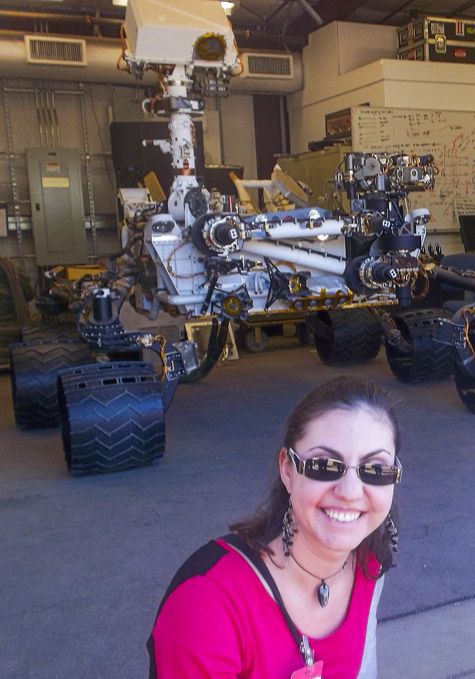
Credit: Svetlana Shkolyar
What early career advice do you have for those looking to do what you do?
First, identify your true passion. Make sure you’re going after a dream that is your own, uses your best talents, and that it is worth the sacrifices required to achieve it.
During your studies in pursuit of that dream, identify any opportunity you can that will help you gain experience, networks of colleagues, and/or funding. Be persistent in following those opportunities. If you’re not sure you’re qualified for an internship, scholarship, or job, ask for clarification. Don’t dismiss an opportunity you want until you’ve exhausted all ways to get it.
Finally, make sure your goal post isn’t constantly moving forward. It is easy in the academic and research world to get caught up in next month’s defense, next semester’s funding, or next year’s job application. Once you achieve a small victory, take the time to celebrate it. There will always be more goals to achieve and more work to be done. Celebrating your small successes is as important as achieving them and a key to feeling fulfilled.
What was your first big research achievement?
I was thrilled when images I took from my early PhD research made the cover of Astrobiology Journal. These images were microscopy photomicrographs of thenardite (sodium sulfate) crystals that I collected as part of a Mars analog biosignature study. Thenardite looks like any standard mineral to the eye, but under the microscope, it is stunning, when using cross polarized lenses that bend light a certain way through the mineral. I enjoyed turning my science into art and sharing it with the community!
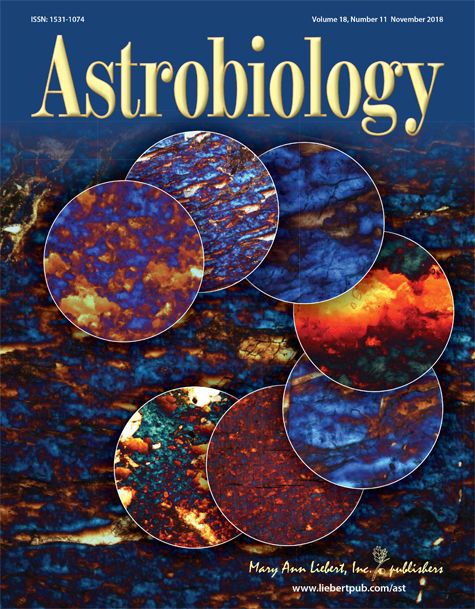
Credit: Astrobiology Journal / Mary Ann Liebert, Inc.
What do you like to do in your free time?
In my student days, I was a swing and salsa dancer. I used to perform in a dance group in the town where I went to graduate school, Tempe, AZ. For our wedding dance, my husband and I choreographed our own dance to a Latin remix of the song, “Stand By Me”.
I am also a foodie (and consider it a hobby). I love experimenting in my kitchen with dishes from different cultures, with unique flavors, and using locally sourced ingredients. Often, I use mystery ingredients to inspire my cooking based on using up whatever may spoil soonest in my fridge! My toddler, Shaya, is thankfully a fan of some of my creations (especially the sweet ones).
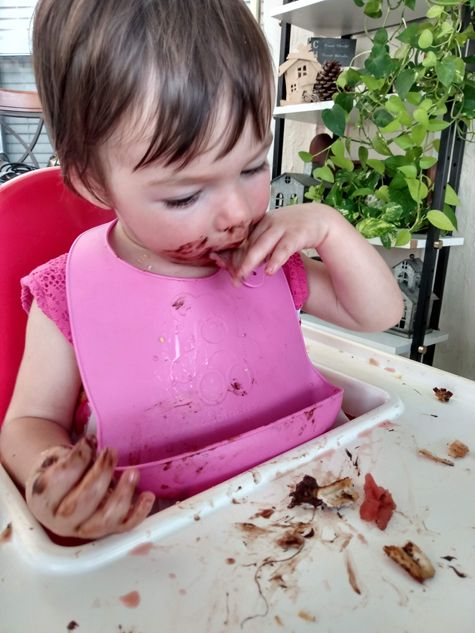
Credit: Svetlana Shkolyar
One of my other culinary interests, and something that has helped me get through the pandemic, has been learning the art of espresso brewing. My goal has been to perfect my milk foam so I can make latte art! Making (and then cleaning!) a good espresso drink can be an involved process, but for me, it’s meditative and reminds me to be present in the moment.

Credit: Svetlana Shkolyar
What aspect of your work excites you the most?
I love sharing the excitement of my career and science experiences, especially the search for life elsewhere, with the public and children. I enjoy doing science outreach and communication with students in the classroom, through mentorship, science writing/blogging, media appearances, and at local science events.
I’ve found that the narrative of astrobiology is very impactful to promote an interest in science among the public because almost everyone is curious if “we are alone in the universe”. I think outreach and good science communication are very important in society because they may improve science literacy and inspire the next generation of thinkers. Having a positive impression about science from a young age may instill critical thinking, a sense of sustainability, and global awareness later in life, and this can inspire children to become better problem solvers both in their careers and personal lives, no matter the professional path they pursue.
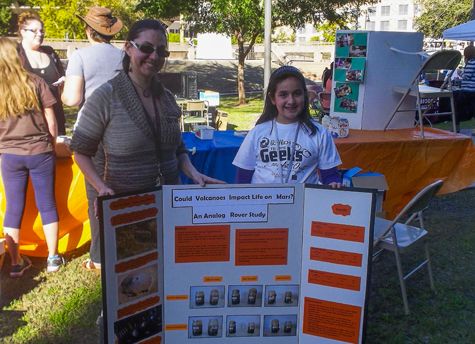
Credit: Svetlana Shkolyar
Biography
Home Town:
Jacksonville, Florida
Undergraduate Degree:
B.S., Physics, University of North Florida, Jacksonville, FL
Post-graduate Degrees:
M.A., Mass Communication (Science Track), University of Florida, Gainesville, FL
M.S., Space Studies, University of North Dakota, Grand Forks, ND
Ph.D., Geological Sciences, Arizona State University, Tempe, AZ
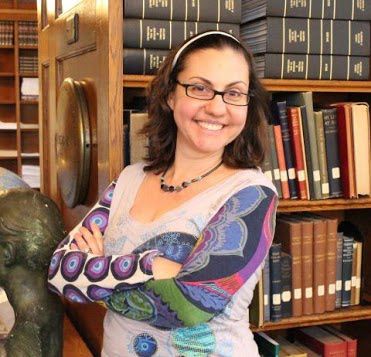
Link to Dr. Shkolyar's GSFC Bio
